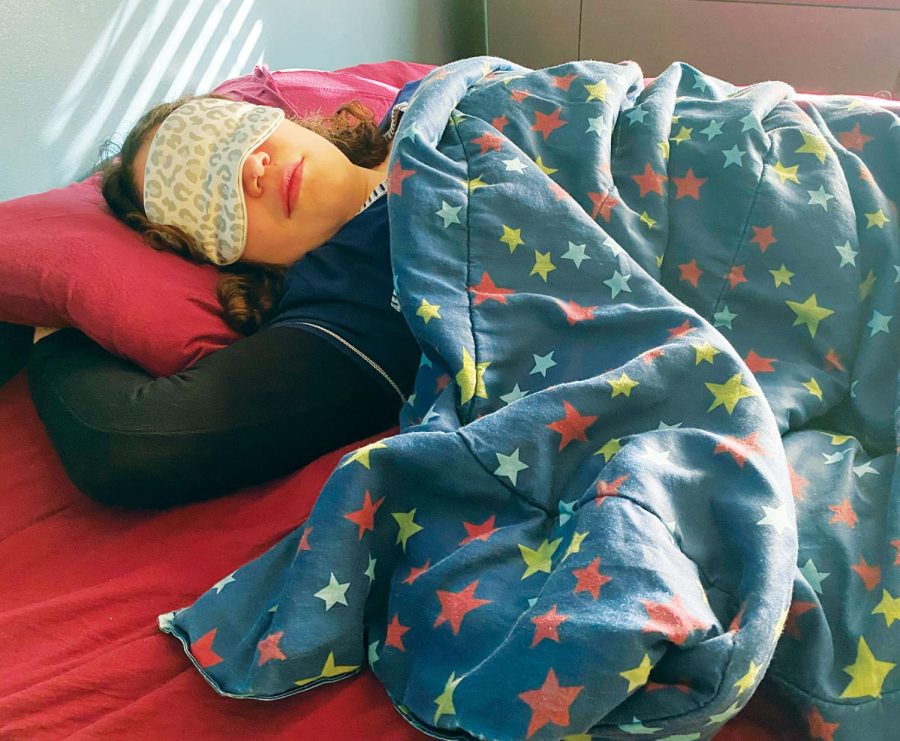Don’t sleep on napping
Recharge in 20 to 30 minutes
Twenty to 30 minutes is all the time needed to experience the benefits of napping. Memory, mechanical function, focus and judgment can all be improved with a nap.
“Students might not get enough sleep, or [nighttime sleep] might not be enough for them to get through their day and feel productive,” said Dr. Samuel Bado, sleep medicine fellow at the University of Michigan-Ann Arbor. “So in that case, it’s okay to take about 20 minutes to recharge [and] restore for the day. [Naps] can give you a lot of advantages.”
Getting the recommended eight to 10 hours of sleep for teenagers, and taking naps if needed, has a positive effect on the ability to learn, retain knowledge and take tests.
It is generally best to limit naps to 20 or 30 minutes to avoid sleep inertia, which is the groggy feeling after waking up from a nap in the middle of a sleep cycle.
A few times a semester, P.E. teacher Justin Weiner lets his Introduction to Strength Training classes nap for 26 minutes, which Weiner said is the “golden amount.”
When junior Olivia Stasieluk took Weiner’s class last school year, she was surprised when Weiner told her the class was allowed to nap.
“Everyone was giggling and it was funny, but [Weiner] understood,” said Stasieluk. “He turned off all the lights … and after like 10 minutes, you could literally hear people snoring.”
While napping for the recommended amount of time has benefits, napping for many hours and more than once a day can be a sign of an underlying health problem, such as a sleep disorder.
“The most common reason [for napping] is that you’re just not getting enough sleep, … but teenagers have other issues related to sleep, [so] they might need to nap more,” Bado said.
Naps longer than the recommended duration can disrupt the sleep cycle, making it more difficult to sleep at night.
“One of the things that helps us sleep is called sleep pressure,” said Mary Carskadon, director of Sleep and Chronobiology at Bradley Hospital. “The pressure builds the longer we stay awake, but if you take a nap, you let out some of that pressure, and so it takes longer for [the sleep pressure] to build up to help you fall asleep at night.”
According to Dr. Richard Castriotta, director of the Sleep Disorders Center at Keck School of Medicine at the University of Southern California, high school students who get really insufficient sleep of under six hours can experience poor mechanical function during the day, just like having too much alcohol.
“In some states, driving while drowsy is legally equivalent to driving while intoxicated because, physiologically, it’s the same influence,” Castriotta said.
Students in Weiner’s class usually react positively to being able to nap.
“When they get done with [the nap], they realize, ‘Holy cow that was refreshing,’” said Weiner. “Or, you know, some of the comments are as simple as, ‘Man, that was really nice.’”


